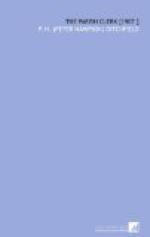The Lord Mayor and his colleagues again showed sympathy and compassion for the dispossessed clerks, and offered them the church of the Hospital of St. Mary of Bethlehem in 1552 for their meetings. They did not lack friends. William Roper, whose picture still hangs in the hall of the company, the son-in-law of Sir Thomas More, was a great benefactor, who bequeathed to them some tenements in Southwark on condition that they should distribute L4 among the poor prisoners in Newgate and other jails. He was the biographer of Sir Thomas More, and died in 1577.
In 1610 the clerks applied for a new charter, and obtained it from James I, under the title of “The Parish Clerks of the Parishes and Parish Churches of the City of London, the liberties thereof and seven out of nine out-parishes adjoining.” They were required to make returns for the bills of mortality and of the deaths of freemen. The masters and wardens had power granted to them to examine clerks as to whether they could sing the Psalms of David according to the usual tunes used in the parish churches, and whether they were sufficiently qualified to make their weekly returns. In 1636 a new charter was granted by Charles I, and again in 1640, this last charter being that by which the company is now governed. By this instrument their jurisdiction was extended so as to include Hackney and the other fifteen out-parishes, and they gained the right of collecting their own wages, and of suing for it in the ecclesiastical courts, and of printing the bills of mortality.
Soon after the company lost their hall through the high-handed proceedings of Sir Robert Chester, they purchased or leased a new hall, which was situated at the north-east corner of Brode Lane, Vintry, where they lived from 1562, until the Great Fire in 1666 again made them homeless. The Sun Tavern in Leadenhall Street, the Green Dragon, Queenhythe, the Quest House, Cripplegate, the Gun, near Aldgate, and the Mitre




